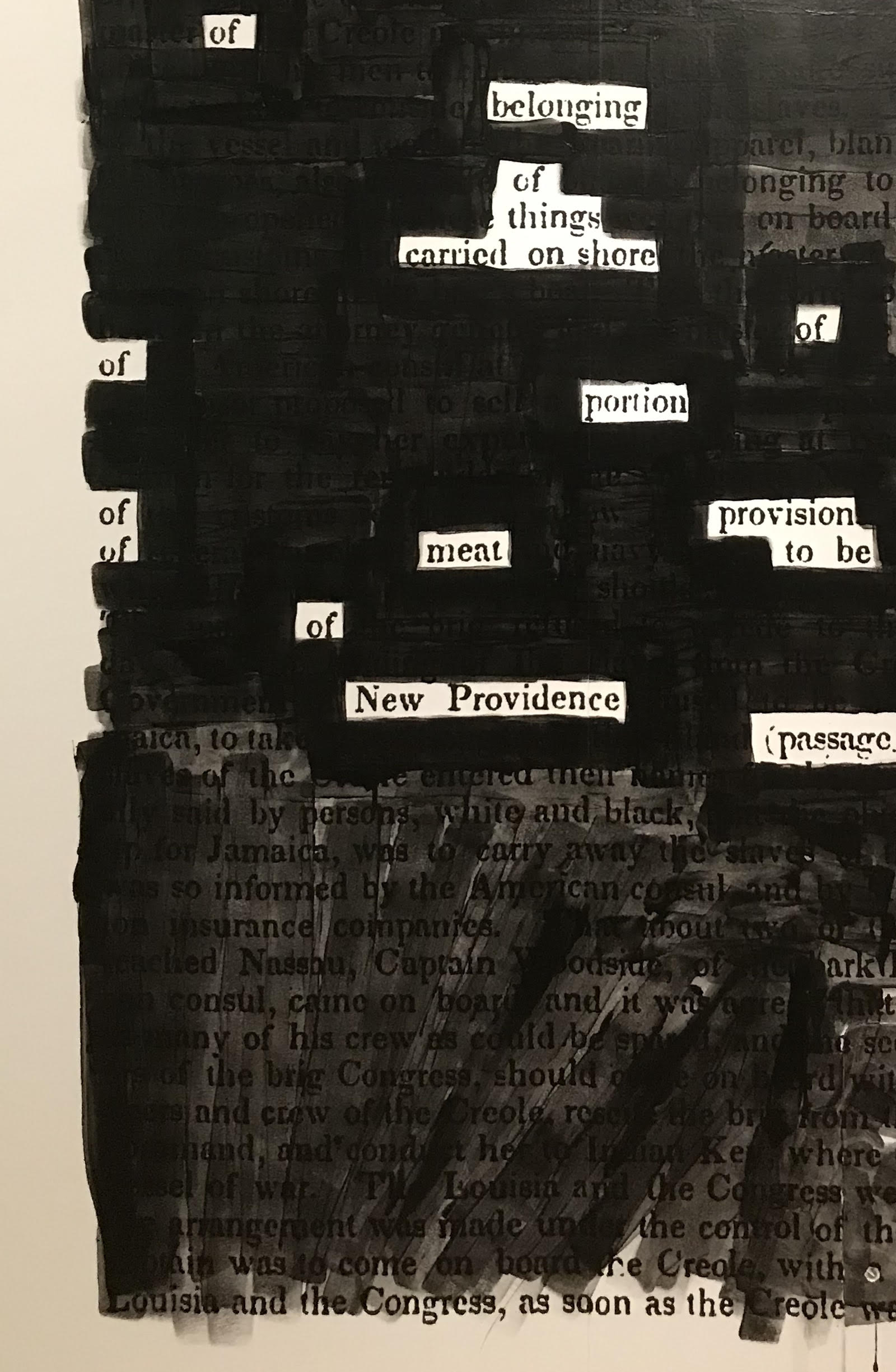
The image shown here is a fragment of a poem created by Quenton Baker and funded by the 2016 James W. Ray Venture Project Award. This particular untitled poem was displayed at the Frye Art Museum in 2018. Baker is a Seattle-based poet and educator who continues to receive prestigious awards and accolades. Instead of being written, this untitled poem was remarkably produced through a process of removing text or redaction.
The underlying text is a reproduction of the US Senate document regarding the 1842 Creole Revolt. The document outlines the case surrounding a commandeered ship that resulted in the most successful slave revolt in US history. Madison Washington led a group of slaves and seized control of a ship bound for New Orleans.
They readjusted course and instead sailed to the British-controlled island of Nassau. The Brits had abolished slavery in 1833, so the island provided a safe haven and freedom for 135 souls that day.
This past year and in recent days we have been exposed to numerous redacted court documents. Speculation swirls as legal experts and news pundits scramble to decode the meaning of the cloaked text. In this instance the redactions are intended to protect secrets and privileged information from the public. What makes Baker’s work so potent is that he uses the reductive process to illuminate not to conceal. Baker’s poem starts with an historic legal document, available to the public and modifies it through a subtractive process to shed light on the troubling impact of slavery.
